To Italians, Forte dei Marmi is a mythical name, the `Queen of the Italian Riviera,’ even if it means little to most foreigners. This upmarket summer resort on the Versilian coast is considered the epitome of chic. Forte dei Marmi is the Tuscan resort for socialising and being seen, only outdone by the bijou Punta Ala resorts further south, around Monte Argentario. Unlike much of the northern coast, Forte dei Marmi has retained some of its elegance and is far less blighted by beachfront development. Forte dei Marmi grew up around a fort built in 1788 by Leopold I of Tuscany, the remains of which survive in the main square. At heart, this is still a low-rise resort, with the highest things being the pine trees in private villa gardens. Forte is still a fun place for living a mellow version of the high life, with chic beach-life in abundance.
Forte dei Marmi
-
-
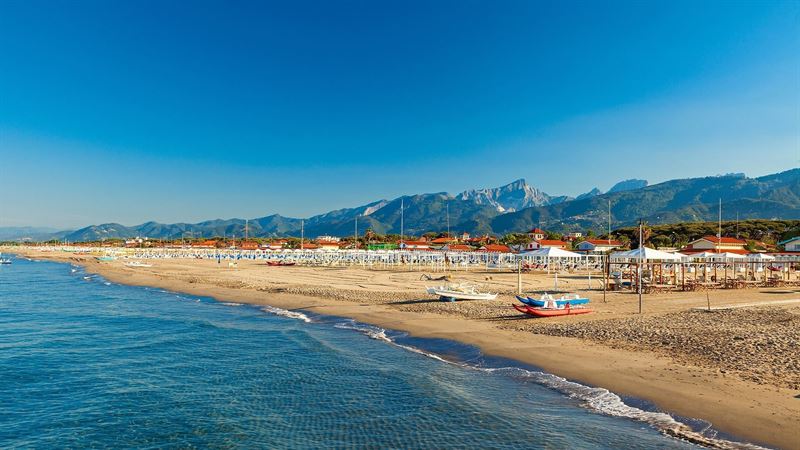
Top Ten Things to Do
Forte dei Marmi is all about the summer resort and being seen in the right places. If you want more than beach-life and gentle cycling, then head north, towards Massa. If feeling in need of adventure, explore Carrara and the marble quarries in the Apuan Alps. This is elemental Tuscany, a stark contrast to cosseted Forte dei Marmi. If in need of cultural stimulation, head away from the coast to the closest art cities. Foremost among these are Pisa to the south, or Lucca, Pistoia or Florence to the east. If you want a taste of country living, with villas and rural views, then do the Lucca villa tour we describe below.
-
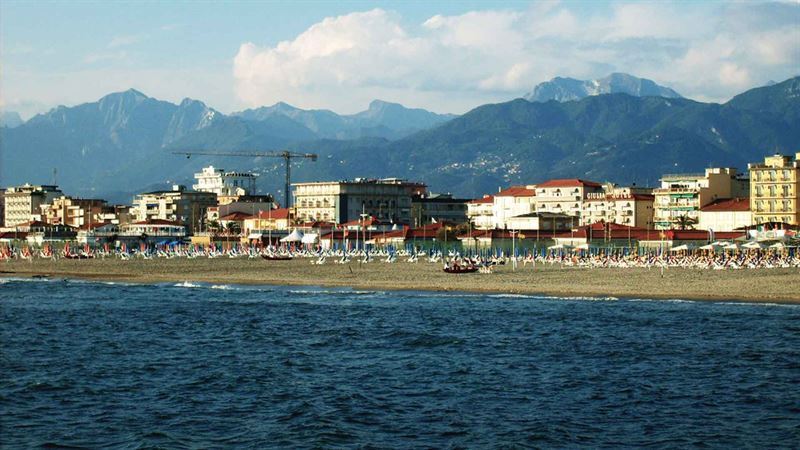
1. Fashionable Forte dei Marmi
Forte dei Marmi is a place for playing with the rich. If you’re not, then just pretend. Treat it as an entertaining game. Guessing who’s pretending is part of the fun. You either get Forte de Marmi or you don’t. This is the resort of choice for holidaying industrialists from Turin and fashion magnates from Milan. This is a resort once favoured by the great Gianni Agnelli and now patronised by the likes of Giorgio Armani, Andrea Bocelli and billionaires from the Balkans. You will certainly find a number of pricey sports cars seen cruising the streets in the early evening! Not that you need a fortune to enjoy the resort, it’s enough to indulge in window-shopping rather than real shopping and to choose your pleasures with care. The shops and cafés around Piazza Marconi somehow still manage to retain something of a small-town atmosphere, even if they do sell some of the most expensive items money can buy.
Cycle along the seafront promenade or walk along the pier, originally created to ship Michelangelo’s marble from the surrounding mountains. Wander the backstreets to sense the peace and quiet that artists and writers found here in the late 19th century. While window-shopping in the early evening, watch the millionaires picking out pieces of designer jewellery. Save your real shopping for the Saturday market on Piazza Marconi. Indulge in some beach-lounging where swimming is optional, but making yourself presentable is essential, especially at a beach club. As the sun sets, make sure that you’re sitting at an outdoor café, in time to preen and pose over cocktails and nibbles. After dinner, stroll along the seafront or find the closest gelateria for an ice cream. After you’ve got the measure of Forte dei Marmi, simply head off on one of the excursions we suggest below - and check our precise shopping and dining tips in this guide.
-
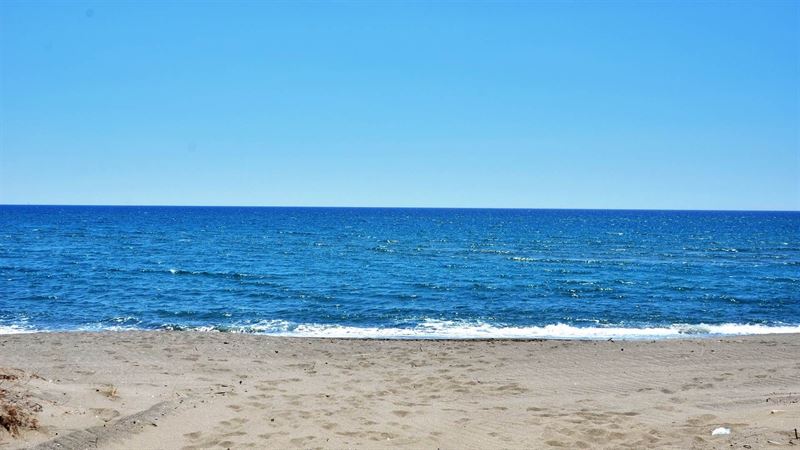
2. Beach-life in Forte dei Marmi
Tuscan beaches deliver both romance on the rocks and the regimented lines of beach umbrellas that most Italians confuse with beach-break heaven. In Forte dei Marmi, Versilia boasts the best-known beach resort for the chic set while Viareggio remains the most popular big beach resort in Tuscany. The region is judged to have a superbly clean coastline, second only to Liguria’s, and scores highly for cleanliness of the water, safety, quietness, eco-friendliness and sustainability. Known as `the blue flags’ system, it is considered trustworthy and confirms the wisdom of opting for a beach holiday in Tuscany. In Versilia, the current resorts awarded the best `blue flags’ are fashionable Forte dei Marmi and bustling Viareggio. Neighbouring resorts of Marina di Pisa, Massa and Carrara have all confirmed their blue flag beach status.
Beach-lounging is big business in Forte dei Marmi. Framed by the Apuan Alps, the resort is made for swimming and strolling and there’s even a stretch of dunes. Patches of beach are freely accessible, while the remainder is made up of smart bathing huts and tropical-style bars, perched on the fine pale-grey sand. The gently sloping shore means bathing is safe. Italian-resort-style, the sea is mostly reached by paying an entrance fee. Expect to lie on a sunbed among rows of others, on sand carefully raked and flattened for your added comfort. There are benefits to this classic Italian approach to beach holidays. Even if you pay for access, in return you get facilities such as sun-loungers, showers, beach cabins and probably a bar or a restaurant. Beach games may well come with the territory and are even more entertaining to watch than to play. And, as described, the water is still very clean, despite the crowds.
For the smart set, summer in Forte dei Marmi is highly ritualistic, with general agreement about which beach, beach club and cocktail bar is the most fashionable spot. Not that you have to follow the crowd. Fashion-conscious visitors favour busy beaches where the latest Prada shades can best be appreciated. One of Versilia’s most fashionable nightspots is Flavio Briatore’s Twiga Beach Club, on the coast between Forte dei Marmi and Marina di Pietrasanta. Here, passing celebrities down cocktails on the beach before dancing the night away in this chic club. You can book a massage, dine on seafood or down Champagne. With hip DJs, the club is international rather than Italian but it delivers what is expected. Beach Club del Principe Forte dei Marmi is another beach club, with the equally exorbitant Ristorante Dalmazia serving such delights as stir-fried shrimps, baked seabass, grilled rock-octopus, or Jerusalem artichokes with black truffles – all on the Principe’s private beach, of course. Bagno Angelo (on via Arenile, T: + 39 0584 82050) is a more affordable beach establishment. If you don’t want to pay the inflated prices of Forte dei Marmi, simply head to Viareggio, further down the coast. While there, sip reviving drinks in the historic Gran Caffe Margherita on the seafront.
Address: Twiga Beach Club, via Roma 2, Lungomare, 55042 Forte dei Marmi
Tel: +39 0584 21518 & https://www.twigafortedeimarmi.com/en/
Beach Club del Principe Forte dei Marmi, Hotel Principe, Viale Morin 67, 55042 Forte dei Marmi
Tel: +39 0584 784145 & www.principefortedeimarmi.com
-
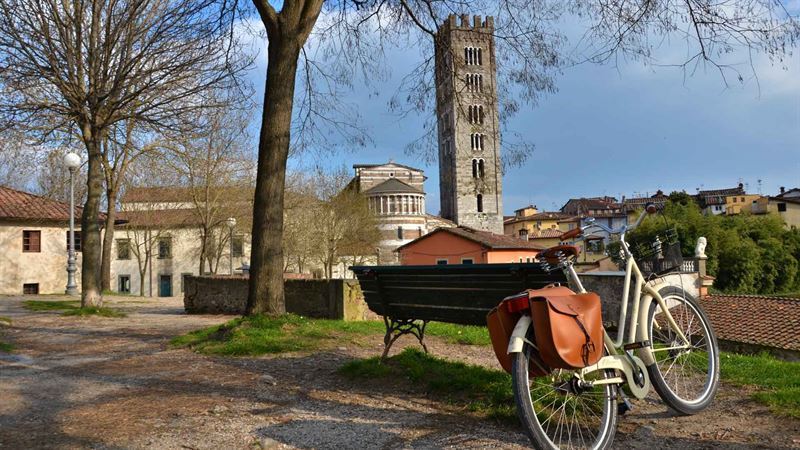
3. Cycling around Lucca - or strolling along the city ramparts
Lucca lies 38 km east of Forte dei Marmi and makes a delightful change after you’ve tired of posing and preening at Versilia’s most prestigious beach resort. Lucca is a classic Tuscan city on a human scale, with just enough cultural attractions to beguile but not bewilder. In summer, outdoor concerts add to Lucca’s appeal, as do the discreet wine bars and cosy inns. To jaded urbanities, Lucca represents life as it should be led. Ringed by Renaissance walls, the city is made for leisure. The massive ramparts are now the place for jogging, flirting, gossiping and cycling – or several activities at once. It’s hard to believe that Lucca’s 500-year-old walls were built to keep enemies at bay. In 1817, the encircling ramparts were planted with a double row of plane trees, which shade the broad avenue ¬running along the top of the walls. This is now a popular playground, promenade, jogging trail and cycle route.
Lucca is full of lanes too narrow for cars, so join the locals on their bicycles for an intriguing city bike trail. Every now and again, you can take the sloped exit down into town and cycle around the key sites, locking the bike up to a gate when walking around a piazza. This, combined with Lucca’s reputation for culture and ¬intellectual pursuits, has earned the city the nickname of the `Cambridge of ¬Tuscany.’ British fashion designer Paul Smith, a keen cyclist, has a home in the hills and enthuses about cycling in Lucca: “I love cycling around the walls of Lucca; it's so relaxing because there are no cars.” There is something deliciously Continental about cycling around an historic walled city, through its pretty paved streets and piazzas – ideally with a delicious deli lunch tucked away in the basket. You can hire a bike with numerous companies, including Cici Rai close to Porta San Gervasio, the San Gervasio Gate. Daily bike hire costs about €15 per day. Cycling is also a healthy alternative to a day on the beach. For more on the main attractions and dining out, see our full guide to Lucca.
Address: Cicli Rai (booking info), via d San Nicolao 66, Lucca
Tel: (+39) 348 8937119
Web: www.ciclirai.it -
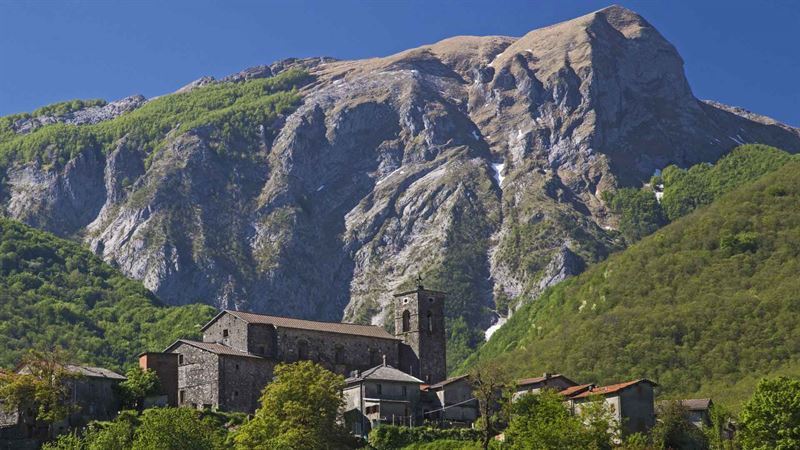
4. Carrara’s Marble Mountains
The northern coast is overshadowed by the marble industry. Even the beaches are dominated by the majestic marble peaks of the Apuan Alps glittering deceptively like snow in bright sunshine. In the Apuan Alps awaits the marble town of Carrara, with several quarries offering guided tours and workshops. Carrara is 17 km north of Forte dei Marmi so easily reached in under half an hour. The fine-grained pure white marble for which Carrara is renowned has been quarried here since Roman times. Italian medieval churches are decorated with marble from Carrara, and it has supplied artists from Michelangelo to Henry Moore with raw material. Formed from limestone, hardened by great pressure and heat, Carrara marble is still the world’s single largest and most important source of the stone. About 200 quarries are still functioning, while over a thousand have been worked out or abandoned. Since the Parco Apuane has been given national park status, opposition by environmentalists to the speed of extraction has heightened. However, the quarry owners continue to fight back in protection of their tough and fearless employees.
The marble quarries are scattered across three steep valleys, the Colonnata, Fantiscritti and Ravaccione. Here, the villages cling to the mountainside that has been sliced away like chunks of cheese. The Cava di Fantiscritti quarry makes for a good introduction to marble, as does the strange journey there. You drive through a series of stark tunnels that were used by marble-transporting trains until the 1960s, when trucks took over. En route there are extraordinary views down into the quarries, where precarious-looking staircases are strung across the sides, and massive trucks trundle across the marble surface far below. Once on the guided tour, prepare to be startled by the dank, foggy and slippery marble quarries that are often more like caverns. On display are strange marble blocks that look distinctly unlike the polished perfection of the final artwork.
Address: Cava di Fantiscritti, via Miseglia Fantiscritti,
Carrara: book with Marmotour
Tel: +39 339 7657470 www.marmotour.com
Cave di Marmo Tours www.cavedimarmotours.com
-
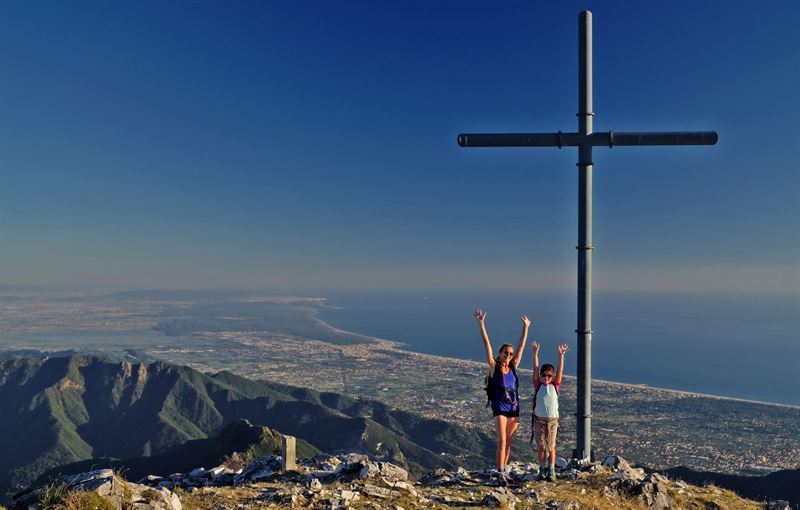
5. Apuan Alps Foray
This drive explores Massa, Carrara and the elemental Apuan Alps, putting the marble mountains in their true context. North of chic Forte dei Marmi the landscape is very different. You could leave the coast at Marina di Massa, a popular resort, with fine wide sandy beaches, pine groves and a promenade of pastel-shaded villas. Tuscany’s northern corner is one of its wildest, strangest and least explored areas from the Versilia coast to a dramatic landscape of pine-covered mountains, craggy ravines, remote castellated villages and marble peaks. The coastal lowlands swiftly give way to snow-capped mountains, terraced hillsides, deep gorges and mountain streams, populated by deer, wild boar, mouflons, badgers, stone martens and wolves, not to mention the flocks of walkers, rock climbers, cavers and canoeists. It’s hard to get more than a glimpse of this wilderness on a day trip but it’s still worthwhile as it’s such a contrast to the coast.
Massa is only 12km north of Forte dei Marmi, with Carrara just 3 km further. Both are working towns, not monuments to marble. Even so, Marina di Carrara’s still ships marble all over the world. Massa and Carrara have prospered from the thriving marble trade, although the resulting industrial development has blighted swathes of the surrounding area. Although mainly modern, Massa has a well-preserved medieval centre, built by the dukes of Malaspina who ruled Massa for three centuries. The core is the Piazza degli Aranci, edged with orange trees and, beyond a cluster of narrow winding streets, stands the medieval Duomo, which boasts a baroque interior and, of course, a modern marble façade. Massa is dominated by the magnificent Renaissance Castello Malaspina. Instead, Carrara is more overtly carved out of marble. Its not a compelling town and is home to a marble museum, the Museo del Marmo, which recounts the story of marble from Roman times to today. Displays include varieties of -marble and granite, plus geographical and historical background from the great leap from hammer-and-chisel quarrying to a high-tech industry. Otherwise, the main evidence of the famous marble quarries in Carrara is the river of white mud that flows through the town, which has a dusty, disaffected air about it.
Address: Museo del Marmo, Viale XX Settembre 85, Localita Stadio, Carrara
Tel: +39 0585 845746 -
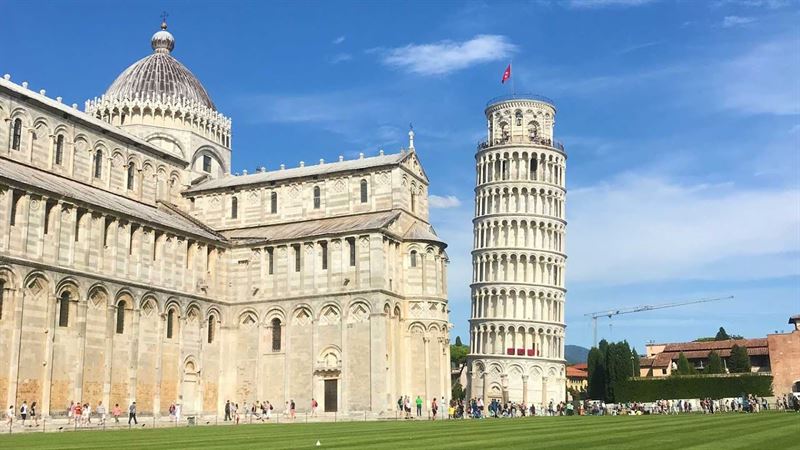
6. Pisa – more than the Leaning Tower
Pisa, 38 km south of Forte dei Marmi, makes for a perfect day trip and is reached in under 40 minutes by motorway. No city is as closely associated with one single monument as Pisa is with her Leaning Tower. It is a wondrous site but so are the Cathedral and Baptistery. Beyond this tourist-studded area, you will have much of Pisa to yourself. Unlike most Tuscan cities, Pisa's religious centre is not sealed inside the walls nor plonked in the old town but marooned on the northern edge of town. The star sights are clustered around the Campo dei Miracoli, a veritable Square of Miracles. Take in these celebrations of Pisan Romanesque and then explore the city itself. Or be radical: to avoid the photo-posing pandemonium, visit the town first and the Tower afterwards. Don’t restrict your visit to a selfie in front of the Leaning Tower. Spare a thought for the rest of Pisa, which is full of intriguing corners.
Begin with the Leaning Tower to salute one of Italy’s most famous monuments. Catch your first sight of the 12th-century Tower through the archway of the Porta Santa Maria, also known as the Porta Nuova. When the sun is shining, the whiteness daz¬zles; when raining, it glistens. The entire square, the Campo dei Miracoli, is studded with architectural treasures. Come to Pisa to take your fill of Pisan Romanesque, which was invented here. Pisa Cathedral, the Duomo, represents the glorious hybrid that is Pisan Romanesque. In form, it is austere Norman Romanesque but inspired by a Moorish Sicilian aesthetic and a Tuscan taste for marble. Yet the colourful geometry of the multi-coloured marble is essentially Tuscan. Also on the Campo dei Miracoli, a veritable Square of Miracles, stands Pisa Baptistry, the Battistero, the largest baptistery in Italy.
Clear your head with a walk along the riverbanks, known as the Lungarni. Also make time to stroll through the Borgo Stretto district for a sense of Pisan life. Down the backstreets, the Borgo Stretto is a lively warren of alleyways and shopping streets between Piazza dei Cavallieri and the Arno riverbanks. Lined with cafes and shops, the arcaded Borgo Stretto opens out at Piazza Garibaldi and the Ponte di Mezzo bridge. It’s a perfect place for a wander in search of an ice cream, an afternoon coffee and cake, or a reasonably-priced meal. Call into the Pasticceria Federico Salza, an old-fashioned bar and pastry shop, set under the porticoes. It makes a tempting place for an afternoon coffee and cake or evening cocktails. For a full tour of Pisa, including a description of the Leaning Tower, plus restaurant and shopping tips, see our Pisa guide
Address: Torre Pendente (Leaning Tower), Piazza dei Miracoli, 56126 Pisa
Tel: +39 050 835011
Web: www.opapisa.it -
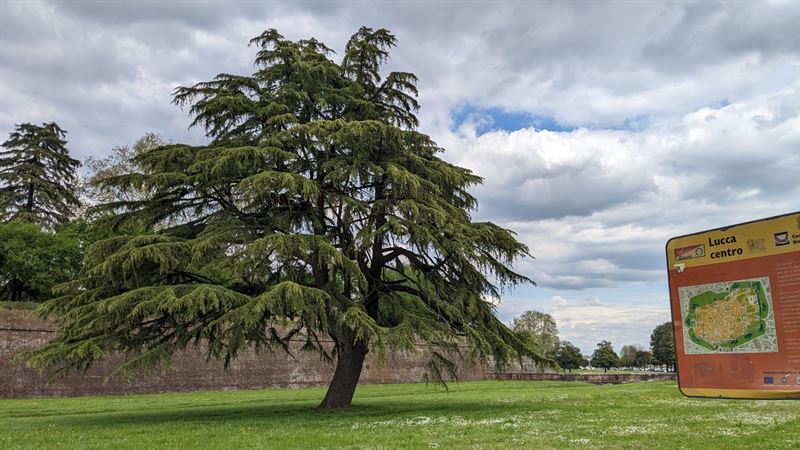
7. Villas and gardens tour near Lucca
Consider a rural outing to the villa-studded countryside around Lucca. This Lucchesi villas drive could be combined with a visit to one of the noble wine and olive oil estates. Alternatively, begin the villa tour with a visit to Lucca, complete with its pinky-gold palaces, pedestrian-friendly bastions and enchanting shops. See our Lucca city itinerary above. Lucca’s villa-studded countryside is a delightful diversion on a hot summer’s day. Most villas are still in appreciative private hands, but often the gardens can be visited, even if the house is not open to the public. Wandering through fragrant shrubbery and cool grottoes, past whimsi-cal statuary and fountains, is a reminder of just how wealthy Lucca remains. Two of the grandest are the patrician Villa Torrigiani and the Villa Reale at Marlia, both surrounded by beautiful parkland.
After reaching Lucca, which is 38 km east of Forte dei Marmi, leave town on the SS12 north, in the direction of the Garfagnana. After passing through Marlia, turn off at Villa Reale. It was built in the 17th century by the noble Orsetti family but remodelled by Elisa Bacciocchi, Napoleon’s sister. There is a lush park with a lake, which surrounds the formal Italian gardens. Surrounded by clipped yew hedges, its Teatro Verde (outdoor theatre) is the setting for concerts during Lucca’s summer music festival. In Camigliano, near capannori, Villa Torrigiani is a fine example of a late Renaissance villa, owned by the Santini and Torrigiani dynasties since 1636. As Lucca’s ambassador to the French court of Louis XIV, Nicolao Santini remodelled the façade and transformed the gardens. Undertaken in around 1650, the resulting baroque gardens feature grottoes, grotesques, a woodland walk and water gardens. For more on attractions and dining, see our full guide to Lucca.
Address: Villa Reale: Via Fraga Alta 2, Marlia, Capannori.
Tel: +39 0583 30108 & www.parcovillareale.it
Villa Torrigiani, Via del Gomberaio, 3, 55012 Capannori LU.
Tel: +39 0583 928041 & www.villeepalazzilucchesi.it
Benvenuti | Associazione delle Ville e Palazzi Lucchesi
www.villeepalazzilucchesi.it
-
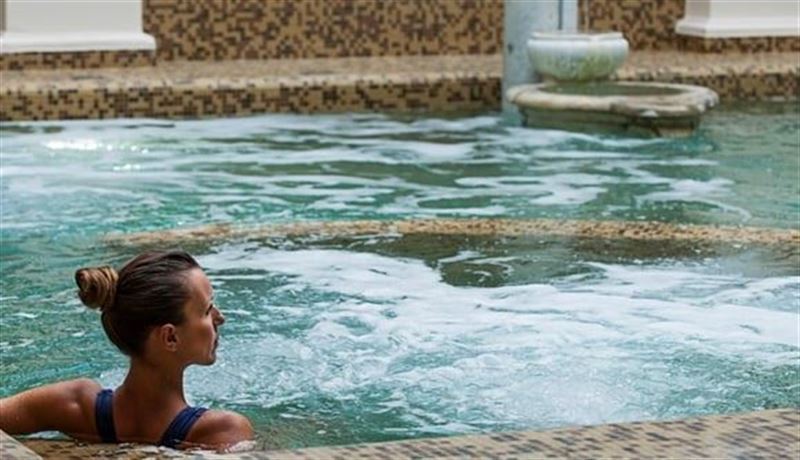
8. Bagni di Pisa – for revitalising hot springs
If suffering from a surfeit of beach-life in Forte dei Marmi, consider a day out at Bagni di Pisa, the most appealing and upmarket day spa close to the coast. Set in San Giuliano Terme, 40 km south of Forte dei Marmi, the spa is close enough to the coast to combine a spa outing with a coastal stroll and seafood feast around Marina di Pisa. The charmingly faded spa town of San Giuliano Terme lies midway between Pisa and Lucca, at the foot of the Pisan mountains. Olives, chestnuts and pines grow nearby, while wild horses roam the hills. San Giuliano is renowned for the curative powers of its thermal springs.
Here, Bagni di Pisa spa resort is the best place to try out a thermal spa treatment, or simply indulge in some pampering. In its heyday, this atmospheric spa resort played host to the Romantic poets but is still romantic without them. These spa waters have been celebrated since Roman times and are especially good for the treatment of rheumatism and arthritis. Montaigne, Byron and Shelley were famous Grand Tourists who swore by such treatments. Even without any ailments, come for a day spa experience. Wallow in the hot springs and indulge in a treatment or two, including in a grotto pool. The spa experiences include lunch or dinner at the romantic Dei Lorena restaurant, with a distant view of the Leaning Tower of Pisa. Alternatively, consider a return to the coast at Marina di Pisa for a seafront stroll or a seafood dinner. (For more, see the Marina di Pisa route in our Pisa guide).
Address: Bagni di Pisa, Largo Shelley 18, 56017 San Giuliano Terme
Tel: +39 050 88501
Web: www.bagnidipisa.com -
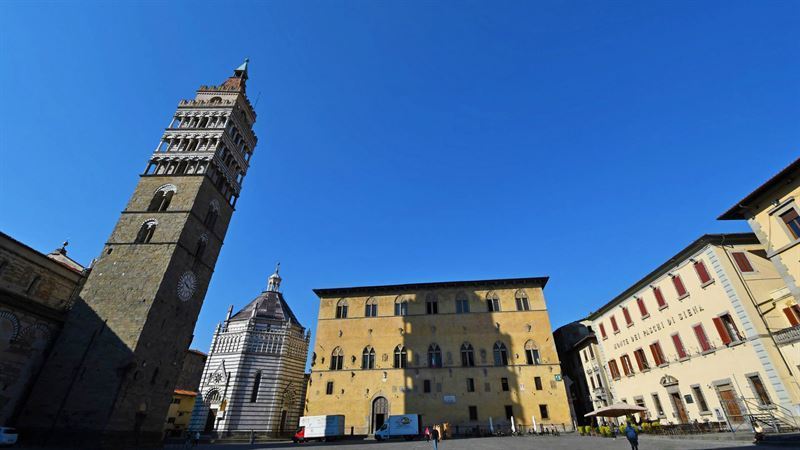
9. A Taste of Pistoia
Intriguing, underrated Pistoia is often dubbed `Florence in miniature’ for its vivid cultural life, quiet confidence and its concentration of art and architecture. It is this living culture that sets Pistoia apart from other cities of a similar size. Pistoia lies 76 km east of Forte dei Marmi and is reached in an hour by motorway. At the heart of Pistoia is the Piazza del Duomo, one of the most beautiful town centres in Tuscany. The star sites are clustered around the main square, making for a dizzying sense of artistic overload. Take it slowly and don’t feel the need to see everything on one visit. The main square is perfection, even when full of bustling market stalls on Saturday and Wednesday. The square also acts as a showcase for city festivities, such as Pistoia Blues, the major music festival.
On the main square admire the jauntily striped cathedral, the sky-high bell-tower and the wedding-cake baptistery. Welcome to the Cattedrale di San Zeno (Pistoia Cathedral, also known as the Duomo), the Campanile (bell-tower) and the Battistero di San Giovanni (Baptistry of St John). The same square is surveyed by the Palazzo del Comune, the Town Hall, which is home to the Museo Civico (Civic Museum). The Pisan-Romanesque cathedral boasts a splendid 12th-century façade of green-and-white marble stripes, greatly influenced by the Pisan style, with its elaborate surface patterning. The Gothic bell-tower boasts three tiers of green-and-white Pisan arches and makes for a wonderful panorama from the top, with a bird’s eye view of Piazza del Duomo.
Nearby stands the Palazzo dei Vescovi, the Bishops’ Palace, which houses the Museo dell’Antico Palazzo dei Vescovi, the Ancient History Museum. The square is framed by a series of handsome Renaissance palaces, including the Palazzo del Podestà, still the city’s law courts, a mansion graced by a finely decor¬ated inner courtyard. The area around the Piazza del Duomo has been pedestrianised, making it a pleasurable place for pottering. A profusion of bars, inns and elegant shops in this area adds to Pistoia’s appeal. Pistoia is also a foodie hotspot and upholds some of the best Slow Food traditions in Tuscany. The most typical dish is maccheroni sull’anatra, pasta in a rich duck sauce. See our full Pistoia guide for more tips, from dining to a great underground tour of the Ospedale del Ceppo, a monumental medieval hospital.
Address: Cathedral, Bell-tower & Baptistry, Piazza del Duomo, 51100 Pistoia
Tel: +39 0573 25095
Web: www.comune.pistoia.it -
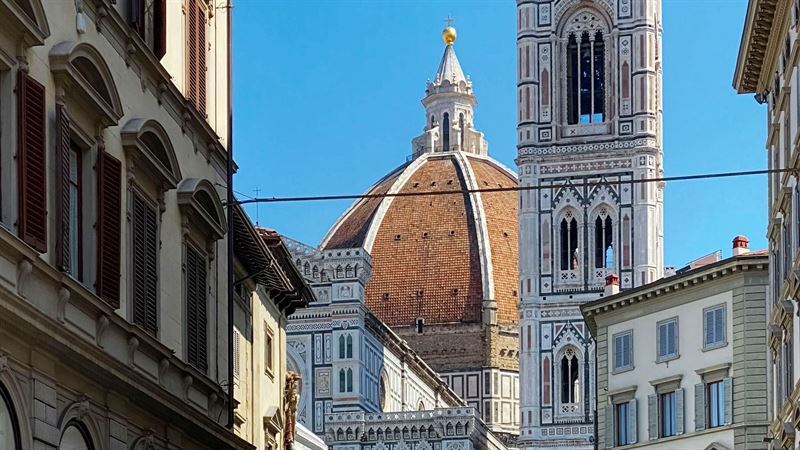
10. Art-filled Florence
Florence is quite a trek from Forte dei Marmi, 160 km distant. Even so, if this is your only chance of visiting the Renaissance capital, you might consider the drive of just under two hours. Despite devouring the checklist of must-see sights, allow time for aimless wandering. Beyond the selfie sticks and statuary awaits a funky foodie haunt with sleek cafes, superb cooking and seriously edible markets. Florence is not fusty. Nor has the greedy city lost its gutsy Tuscan soul: traditional inns still serve earthy peasant fare, including macho steaks. Beware of trying to do too much on a day trip. Balance visits to galleries with wanderings in search of the perfect trattoria or the perfect view.
Begin in Piazza della Signoria, the city’s grandest square, with its copy of Michelangelo’s David and, beside it, the crenellated Palazzo Vecchio, with a well-presented collection. After a coffee at Rivoire, brace yourself for the Uffizi Gallery, the world’s greatest collection of Italian art. Try and plan your visit in advance or even book a time slot online. After lunch, visit the Duomo, the biggest building for miles around. It is still Brunelleschi’s Renaissance dome that defines Florence. Out of respect for Brunelleschi’s achievement, the city forbade the construction of any building taller than the Duomo.
Clear your head in the Oltrarno, across the river Arno, where you will find the Giardino Boboli (Boboli Gardens). The Medici dynasty created these statuary-encrusted gardens, which became the model for Italianate gardens for centuries to come. Before dinner, explore the Oltrarno neighbourhood's craft heritage on the so-called Left Bank of the city. This bohemian district is studded with stylish bars and buzzy inns interspersed with antique shops, jewellery-makers, picture-restorers and bijou art galleries.
Check our Florence guide to see what appeals most. If visiting a number of museums, consider buying a Firenze Card online (www.firenzecard.it) and also book a time slot at the Uffizi Gallery.
-

Eating & Drinking
See our beach club suggestions in the Forte dei Marmi Beachlife option above or consider the short drive to Viareggio, just south, to sip reviving drinks in the historic Gran Caffe Margherita on the seafront. In Forte dei Marmi seafood predominates, as on the Versilia coast in general. The resort also has a number of stylish, creative and gourmet restaurants, mostly with good presentation but inflated prices.
-
Bistrot
This Michelin-starred restaurant finds favour with visitors and locals alike. A charming colonial-style interior is the setting for a feast of fine sea food. Typical dishes include raw fish platters, lobster risotto, fish and vegetable tempura, and tagliolini pasta with truffle and toasted hazelnuts.
Address: Via Achille Francheschi 14, 55042 Forte dei Marmi
Tel: +39 0584 89879
Web: www.ristorantebistrot.it -
Caffè Principe
Set close to Piazza Marconi, Caffè Principe is a perennially popular café made for people-watching. It sits on its laurels but remains a favoured spot for the smart set, at any time of day. Fashion designers such as Giorgio Armani and Paul Smith are famous fans. The café can take you from breakfast to nightcaps. Come for a breakfast brioche, an Aperol Spritz or an affogato al caffè (a dessert made by dunking vanilla ice cream in espresso coffee).
Address: Caffe Principe, via Carducci 2, 55042 Forte dei Marmi
Tel: +39 0584 89238
Web: www.principefortedeimarmi.com -
La Cucina del Giardino
For this exorbitant resort this is a very reasonably-priced restaurant, an unfussy trattoria serving mainly seafood but also steaks and a good range of pasta dishes – all in an unpretentious setting.
Address: Via Stagio Stagi 66 A, 55042 Forte dei Marmi
Tel: +39 0584 81170 -
Beach Club del Principe Forte dei Marmi
Ristorante Dalmazia serves such delights as stir-fried shrimps, baked seabass, grilled rock-octopus, or Jerusalem artichokes with black truffles – all on the Principe’s private beach, of course.
Address: Hotel Principe, Viale Morin 67, 55042 Forte dei Marmi
Tel: +39 0584 784145
Web: www.principefortedeimarmi.com -
Sky Lounge Bar
Go here for after-dinner drinks on the rooftop terrace of the 67 Sky Lounge Bar in the Hotel Principe.
Address: Viale Morin 67, 55042 Forte dei Marmi
Tel: +39 0584 783636
Web: www.principefortedeimarmi.com -
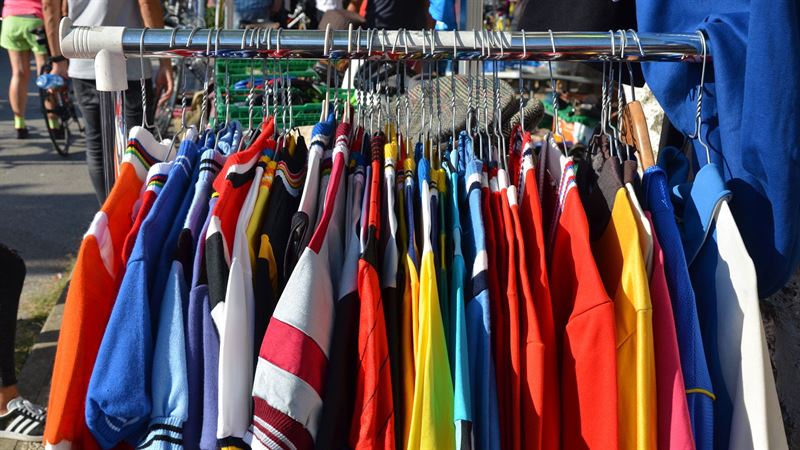
Shopping
Reflecting market tastes, the resort mainly deals with pricey designer brands, ranging from beachwear to upmarket international fashion and accessories. The boutiques around Piazza Marconi somehow manage to retain something of a small-town atmosphere, even if they do sell some of the most expensive items money can buy. Armani, Prada and Roberto Cavalli all have boutiques in town. For fun, browse Forte dei Marmi’s Wednesday market on Piazza Marconi for everything from stylish bed-linen and swimwear, or top designer fashion to fakes. In summer there’s an additional Sunday market, held on the same square. If peckish while shopping, grab crunchy snacks of foccaccia or `pizza a taglio’ (pizza by the slice) from Da Valé, a popular bakery (Piazza Garibaldi 4, Forte dei Marmi, T: +39 0584 89361). On the excursion to visit the marble quarries around Carrara, look out for small souvenirs made of marble.
-
Volponi
For one-off bags and hand-crafted shoes, head to Volponi.
Address: Via Carducci 4, Forte dei Marmi 55042
Tel: +39 0584 8271 -
Morino
Set just off the main square, this established, family-run, high-end jewellers have been tempting visitors since the 1940s.
Address: Via Carducci 12, 55042 Forte dei Marmi
Tel: +39 0584 83263
Web: www.morinigioielleria.com -
Parking
Forte dei Marmi provides easier parking options than do many Tuscan towns, except at peak periods. Parking is in short supply during the regular Wednesday morning market and during the seasonal Sunday morning market. Good parking options are generally on the seafront, around Viale Italico (free), and on Viale della Repubblica (paying parking).
Most Tuscan towns operate a strict ZTL system, a Limited Traffic Zone. This means that the Centro Storico (historic centre) is essentially closed to traffic, particularly for non-residents. Cars will need to be left outside this zone. Forte dei Marmi’s ZTL covers a larger area in summer so expect more restrictions then.
Advice on ZTLs: You may see other cars crossing the ZTL boundary (Limited Traffic Zone) and assume you can proceed. Not so. The drivers crossing into the ZTL zone will probably be locals and have residents’ permits. Visitors do not so are liable to fines. Zones are monitored by cameras, so tickets are issued immediately and automatically, as soon as (and each time) the car crosses the ZTL boundary. -
Getting there & Getting around
Getting there: From the A12 motorway, take the Versilia exit. Turn right and continue until the third set of traffic lights; then turn left and after about 1.5 km, you reach Forte dei Marmi’s Piazza Garibaldi, with its Grand-ducal fort. (For more parking advice, check with the tourist office, via Spinetti 14, 55042 Forte dei Marmi. Tel: +39 0584 28029)
By car: From Forte dei Marmi, it’s only a 17 km drive to Carrara; Pisa is around 38 km south while Lucca is the same distance west. Pistoia is 76 km away while Florence is 160 km distant so a two-hour drive away.
By train: Forte dei Marmi train station is 3km from the resort and known as Forte-dei-Marmi-Seravezza-Querceto. It is on the Florence-Lucca-Viareggio line and reasonably well-connected.
By bike: you can cycle to Marina di Pietrasanta, Lido di Camaiore and then onto Viareggio, a further 11.5 km. For details of cycling routes, check the resort website and tourist office: (via Spinetti 14, 55042 Forte dei Marmi. Tel: +39 0584 28029 & www.comune.fortedeimarmi.lu.it)

























